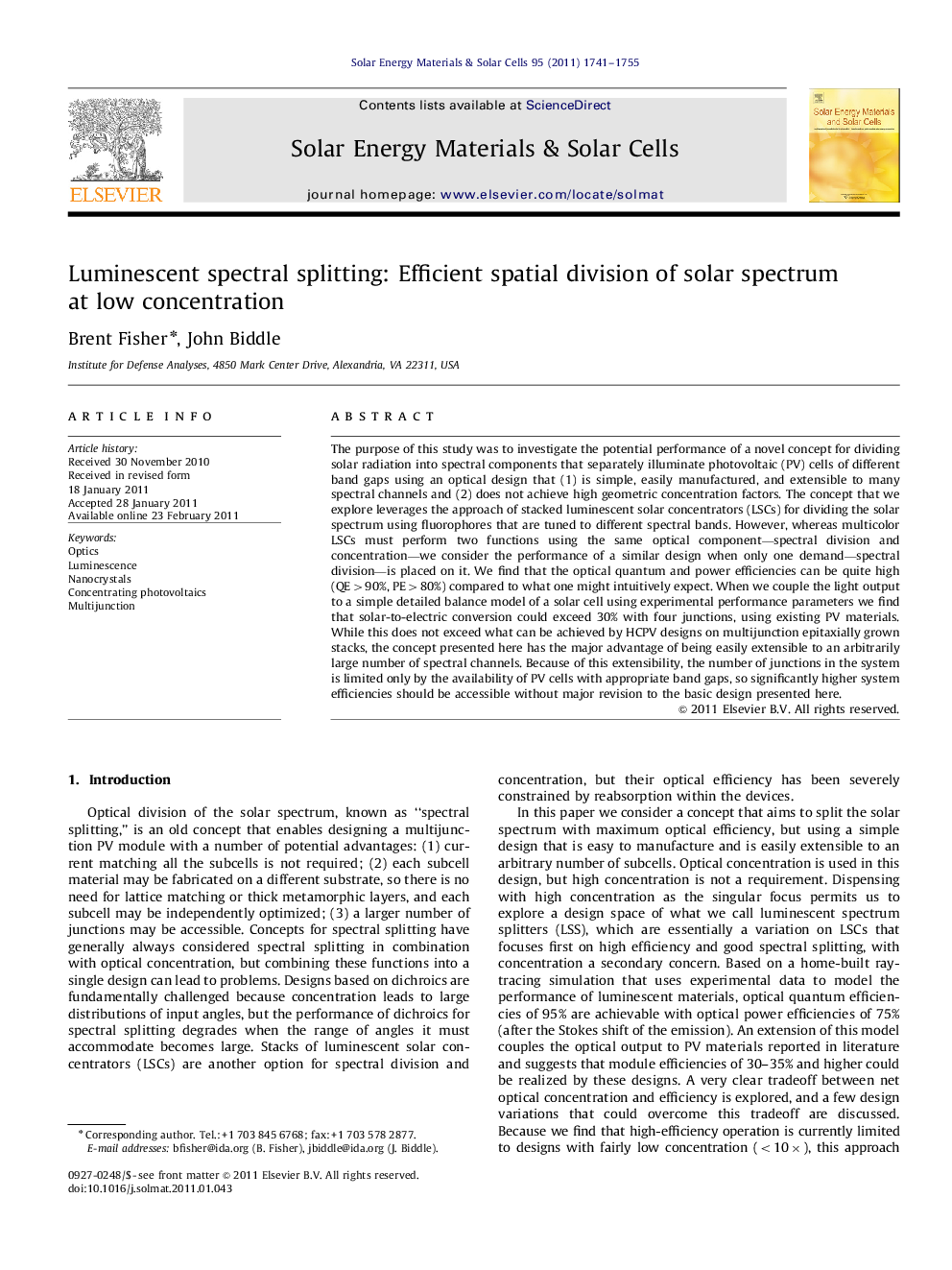| Article ID | Journal | Published Year | Pages | File Type |
|---|---|---|---|---|
| 78847 | Solar Energy Materials and Solar Cells | 2011 | 15 Pages |
The purpose of this study was to investigate the potential performance of a novel concept for dividing solar radiation into spectral components that separately illuminate photovoltaic (PV) cells of different band gaps using an optical design that (1) is simple, easily manufactured, and extensible to many spectral channels and (2) does not achieve high geometric concentration factors. The concept that we explore leverages the approach of stacked luminescent solar concentrators (LSCs) for dividing the solar spectrum using fluorophores that are tuned to different spectral bands. However, whereas multicolor LSCs must perform two functions using the same optical component—spectral division and concentration—we consider the performance of a similar design when only one demand—spectral division—is placed on it. We find that the optical quantum and power efficiencies can be quite high (QE>90%, PE>80%) compared to what one might intuitively expect. When we couple the light output to a simple detailed balance model of a solar cell using experimental performance parameters we find that solar-to-electric conversion could exceed 30% with four junctions, using existing PV materials. While this does not exceed what can be achieved by HCPV designs on multijunction epitaxially grown stacks, the concept presented here has the major advantage of being easily extensible to an arbitrarily large number of spectral channels. Because of this extensibility, the number of junctions in the system is limited only by the availability of PV cells with appropriate band gaps, so significantly higher system efficiencies should be accessible without major revision to the basic design presented here.
Graphical AbstractFigure optionsDownload full-size imageDownload as PowerPoint slideResearch highlights► Study of optical splitting of solar radiation via luminescence at low concentration. ► The optical quantum and power efficiencies can be high (QE>90%, PE>80%). ► Coupled to a solar cell model (using existing materials) total efficiency is >30%. ► High efficiency requires low net concentration at cell. Improvements are possible. ► This splitting concept permits many optical channels easily and simple manufacture.
